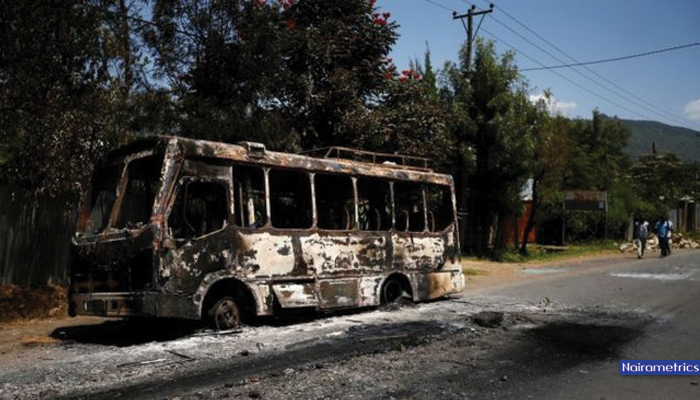Ethiopian Prime Minister Hailemariam Desalegn declared a six-month state of emergency on Sunday, finally giving the world a clue as to the extent of damage caused by the months of protests that have wracked the whole country. While announcing the state of emergency, the Prime Minister said it was to restore to peace to the country, who faces what many have called the biggest challenge to its economic stability in a quarter of a century.
Although the protests had been brewing, the key point in the anti-government protests occurred on October 2nd during the Oromo holy festival known as Irreechaa when a stampede leading to the death of at least 55 persons occurred after tear gas was released into the crowd.
Since then, the protests have escalated leading to death of hundreds and now, the state of emergency. Spates of violence were particularly targeting foreign companies as protesters who are mainly from the Oromia and Amhara region.
Reports however, show that the reasons for the protests are several with the primary factor being the perceived marginalization of the Oromo and Amhara people who make up over 60% of the country’s population by the ruling Tigrean elite.
Protesters have said that they will not back down even in the face of force with several of the roads leading into the capital, Addis Ababa, blocked off by the protesters.
It would be remembered that Ethiopian marathon runner Feyisa Lilesa protested against what he said was unfair persecution of the Oromo people by the Ethiopian government during his participation in the recently concluded 2016 Rio Olympics.
However other reasons include Muslims being unhappy at the imposition of government-approved leaders, farmers disgruntled over their displacement to make way for commercial agriculture and Amharic communities opposed to their inclusion in Tigre rather than the Amhara region.
This comes as bad news to a country that has experienced steady and strong economic growth over the past 10 years, doubling the sub-Saharan economic growth rate of 5.0% with expansion of the services and agricultural sectors account for most of this growth, while manufacturing sector performance was relatively modest.
In 2015 alone, the Gross Domestic Product (GDP) of the country expanded 9.6% over 2014 which is one of the highest in the region, according to World Bank data, considering the slump the GDP of fellow sub-Saharan countries.
However, Ethiopia remains one of the poorest countries in the world with systemic trade deficits, under-developed financial system and unemployment.
It is hoped that the Prime Minister’s promise to restore peace as soon as possible will materialize to give light to what has become Africa’s beacon of economic progress.
